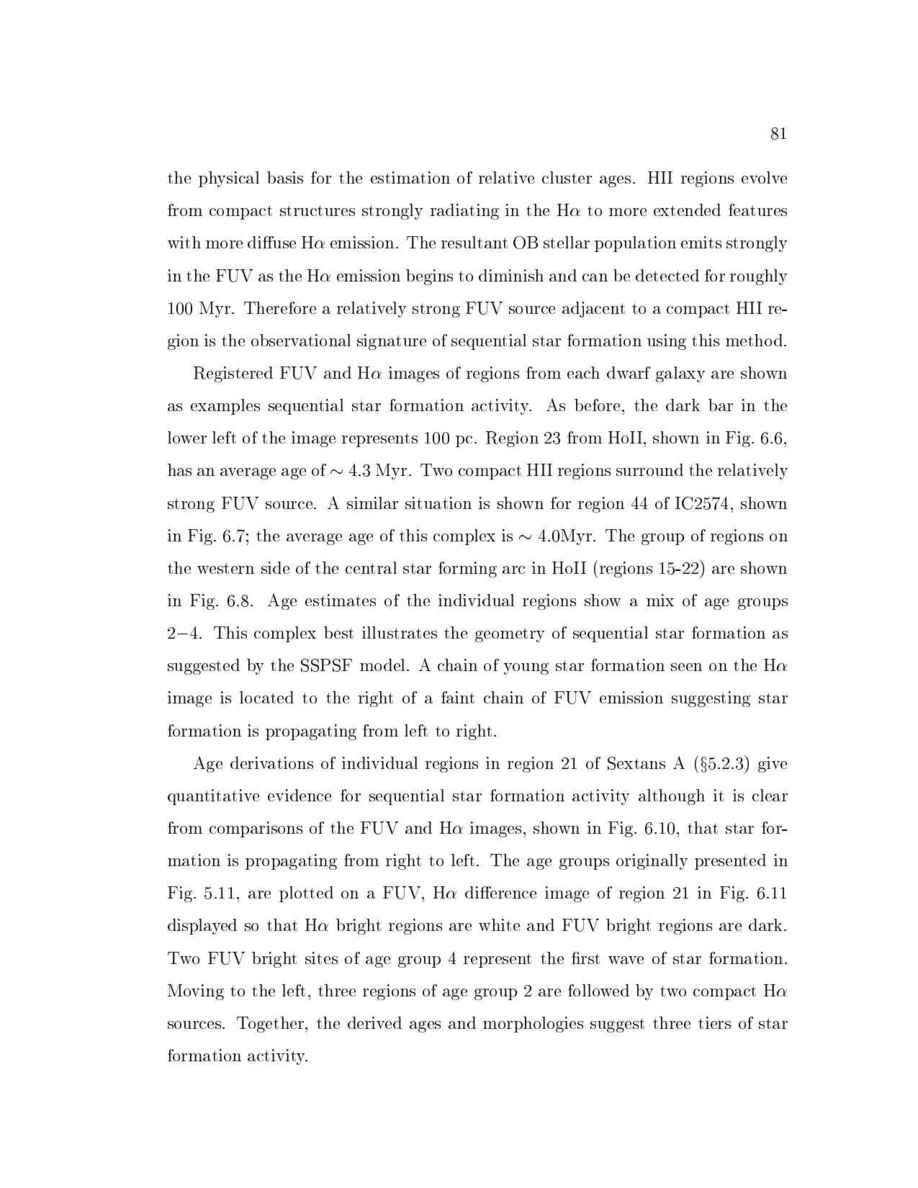
81
the physical basis for the estimation of relative cluster ages. HII regions evolve
from compact structures strongly radiating in the H to more extended features
with more di use H emission. The resultant OB stellar population emits strongly
in the FUV as the H emission begins to diminish and can be detected for roughly
100 Myr. Therefore a relatively strong FUV source adjacent to a compact HII re-
gion is the observational signature of sequential star formation using this method.
Registered FUV and H images of regions from each dwarf galaxy are shown
as examples sequential star formation activity. As before, the dark bar in the
lower left of the image represents 100 pc. Region 23 from HoII, shown in Fig. 6.6,
has an average age of
4
:
3 Myr. Two compact HII regions surround the relatively
strong FUV source. A similar situation is shown for region 44 of IC2574, shown
in Fig. 6.7; the average age of this complex is
4
:
0Myr. The group of regions on
the western side of the central star forming arc in HoII regions 15-22 are shown
in Fig. 6.8. Age estimates of the individual regions show a mix of age groups
2
,
4. This complex best illustrates the geometry of sequential star formation as
suggested by the SSPSF model. A chain of young star formation seen on the H
image is located to the right of a faint chain of FUV emission suggesting star
formation is propagating from left to right.
Age derivations of individual regions in region 21 of Sextans A
x
5.2.3 give
quantitative evidence for sequential star formation activity although it is clear
from comparisons of the FUV and H images, shown in Fig. 6.10, that star for-
mation is propagating from right to left. The age groups originally presented in
Fig. 5.11, are plotted on a FUV, H di erence image of region 21 in Fig. 6.11
displayed so that H bright regions are white and FUV bright regions are dark.
Two FUV bright sites of age group 4 represent the rst wave of star formation.
Moving to the left, three regions of age group 2 are followed by two compact H
sources. Together, the derived ages and morphologies suggest three tiers of star
formation activity.
